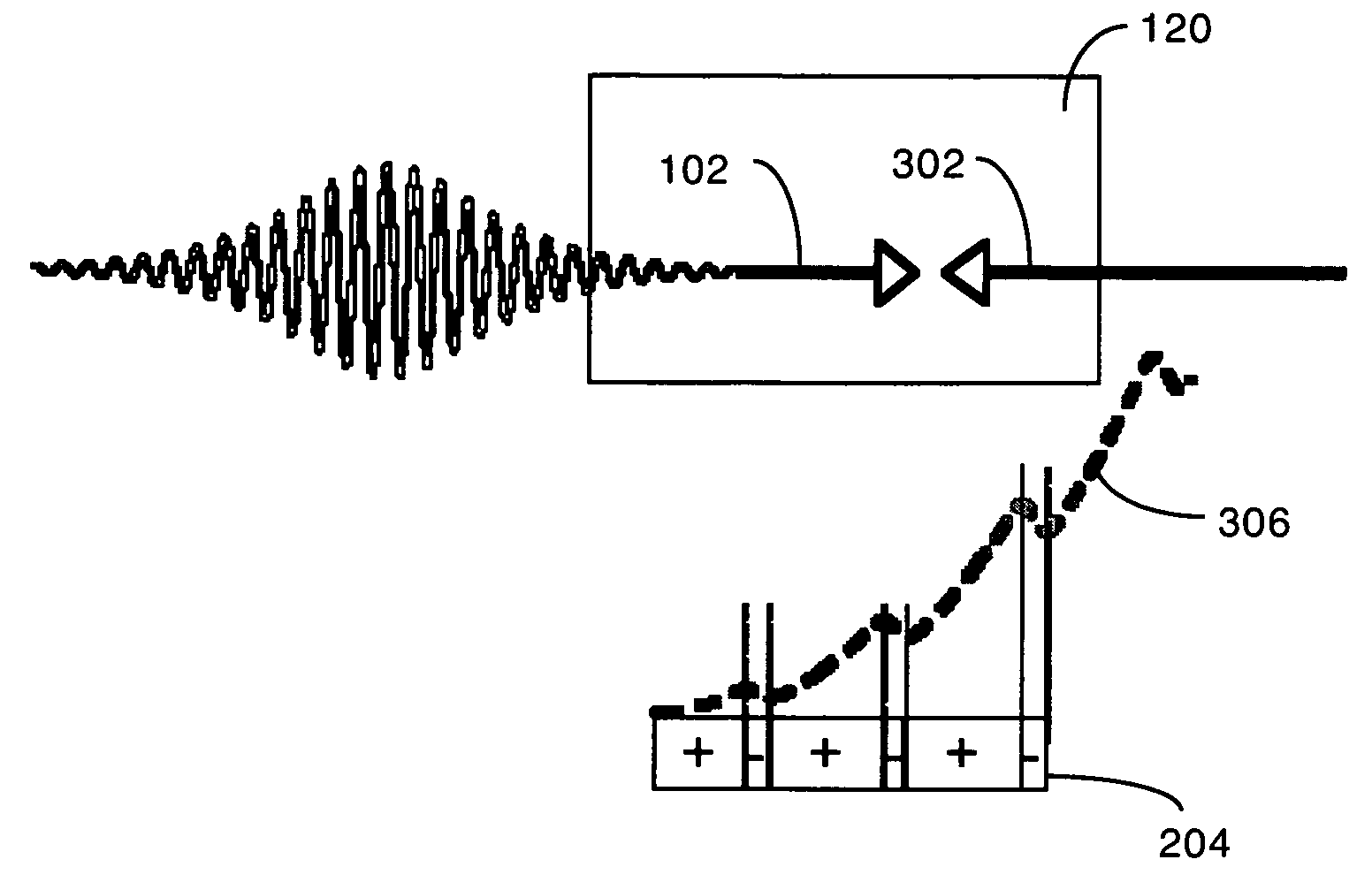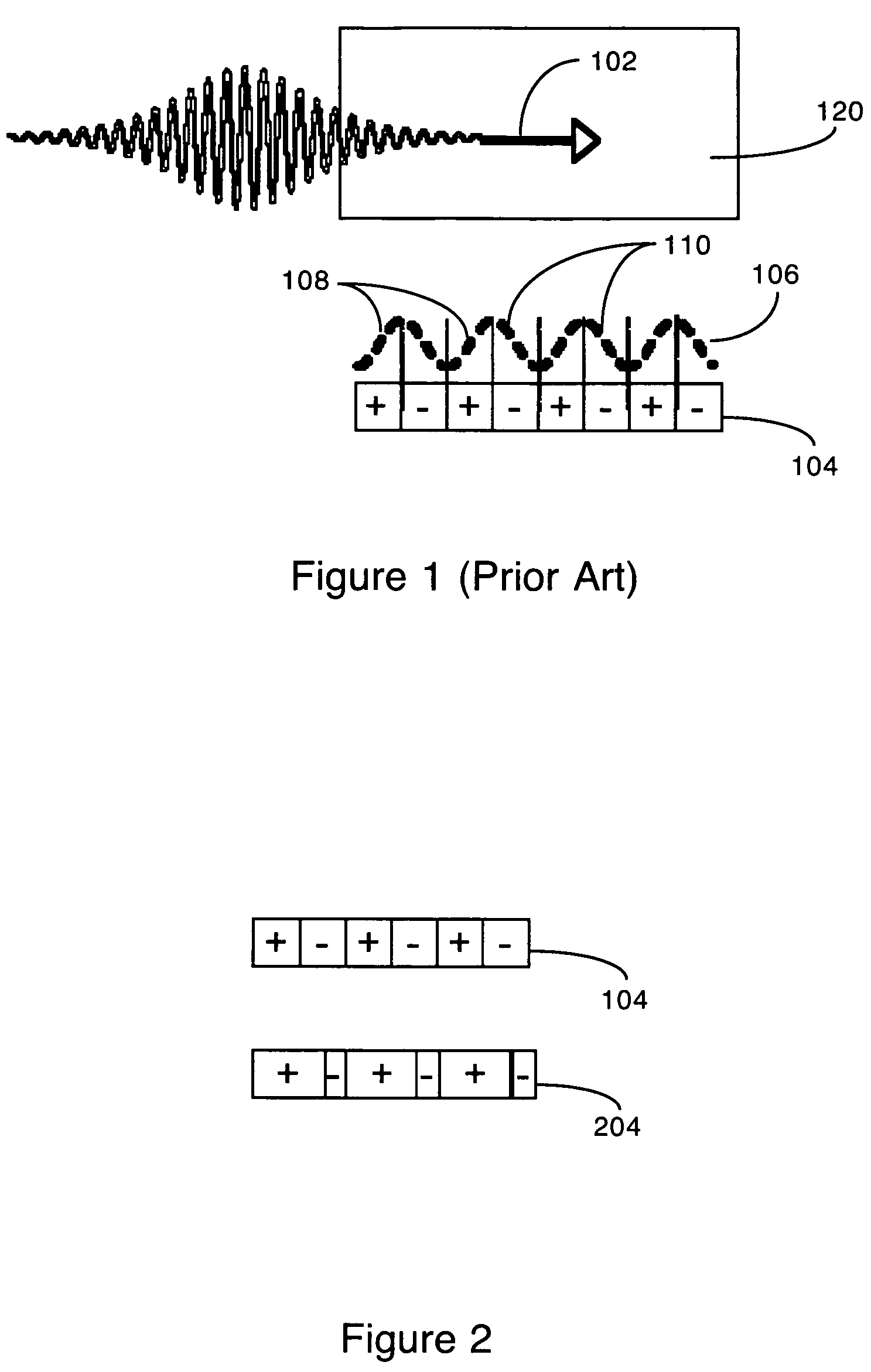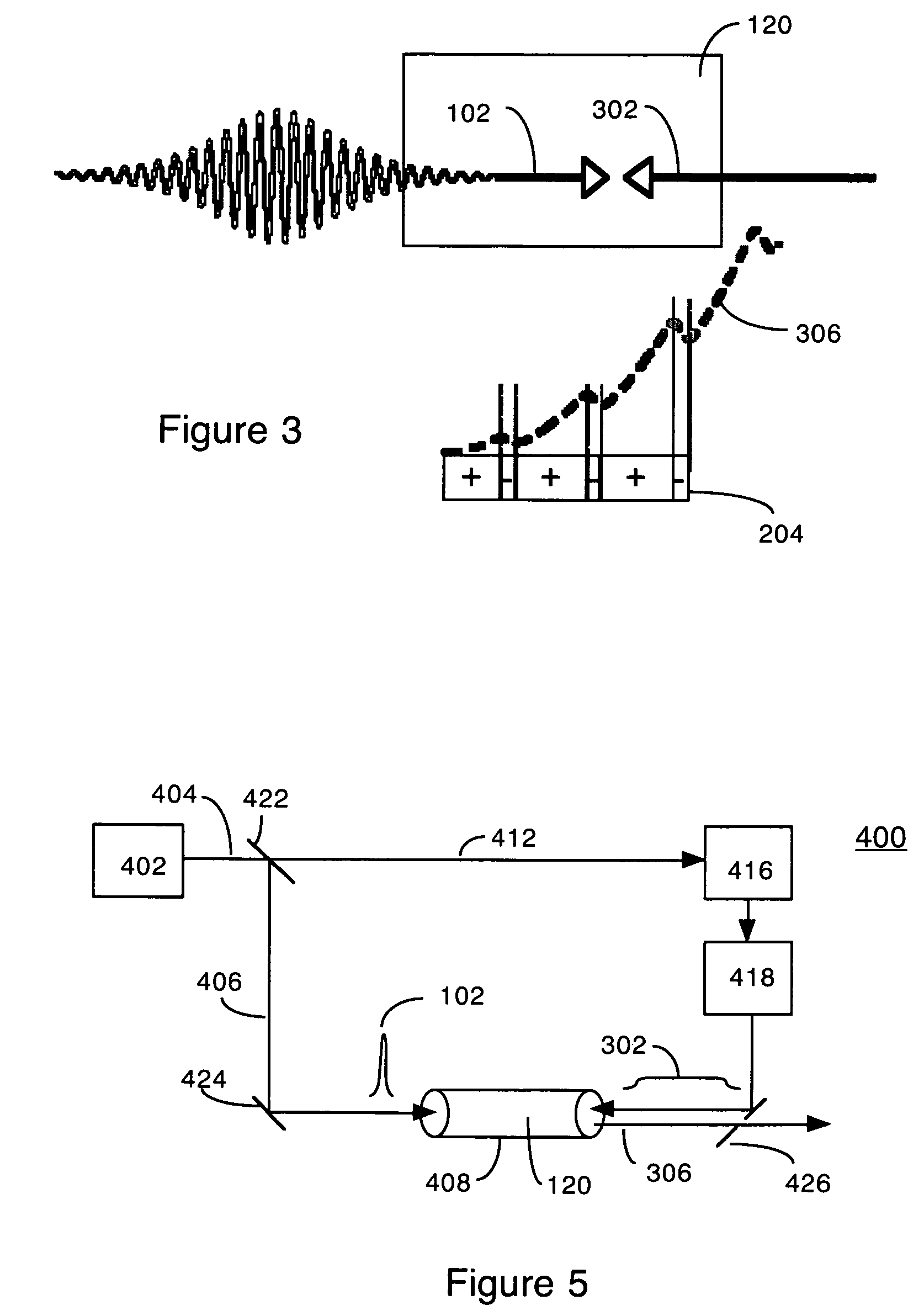Phase matching of high order harmonic generation using dynamic phase modulation caused by a non-collinear modulation pulse
a dynamic phase modulation and high harmonic technology, applied in the direction of instruments, basic electric elements, laser details, etc., can solve the problems of significant modulation in both amplitude and phase of harmonics, the inability to use hhg, and the difficulty in optimizing the modulation period
- Summary
- Abstract
- Description
- Claims
- Application Information
AI Technical Summary
Benefits of technology
Problems solved by technology
Method used
Image
Examples
Embodiment Construction
[0024]FIG. 1 (Prior Art) is a schematic diagram illustrating high-harmonic emission generation (HHG) without phase matching. Driving pulse 102 comprises a femtosecond laser pulse, which enters the HHG medium 120. Diagram 104 indicates the regions within the HHG medium in which constructive and destructive interference of HHG emissions will occur, due to the short coherence length of the HHG beam. The areas indicated by a plus (+) are areas of constructive interference, while the areas indicated by a minus (−) are areas of destructive interference. The length of one positively interfering area (+) in the absence of a modulating pulse is one coherence length.
[0025]Briefly, an ultrashort light pulse 102 is focused into a medium 120 (for example a noble gas) to generate high-order harmonics 106 in the vacuum-ultraviolet to x-ray regions of the spectrum (generally termed “x-ray HHG” herein). However, particularly for conversion to very short wavelengths, the high-harmonic process is not ...
PUM
 Login to View More
Login to View More Abstract
Description
Claims
Application Information
 Login to View More
Login to View More - R&D
- Intellectual Property
- Life Sciences
- Materials
- Tech Scout
- Unparalleled Data Quality
- Higher Quality Content
- 60% Fewer Hallucinations
Browse by: Latest US Patents, China's latest patents, Technical Efficacy Thesaurus, Application Domain, Technology Topic, Popular Technical Reports.
© 2025 PatSnap. All rights reserved.Legal|Privacy policy|Modern Slavery Act Transparency Statement|Sitemap|About US| Contact US: help@patsnap.com



